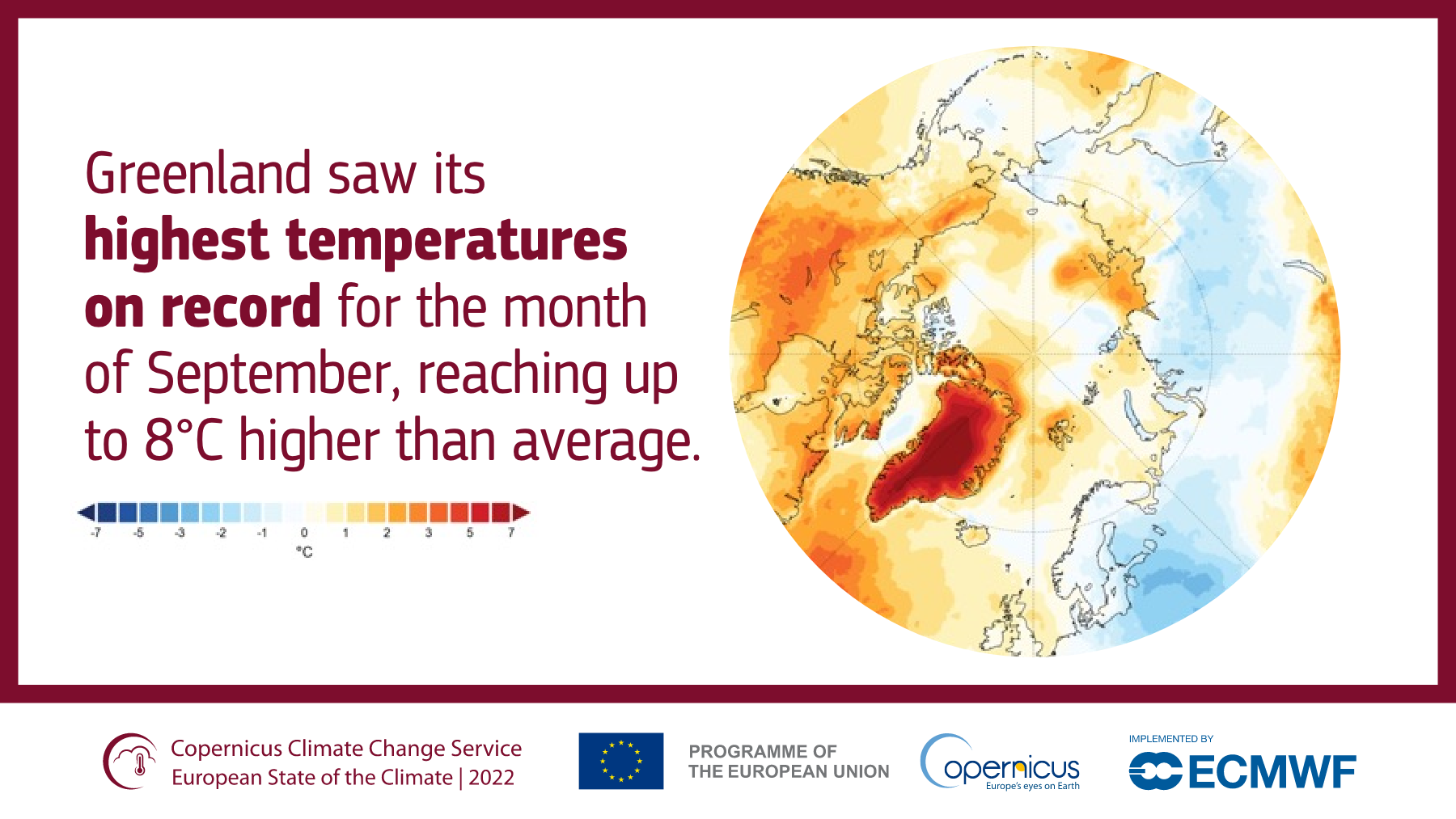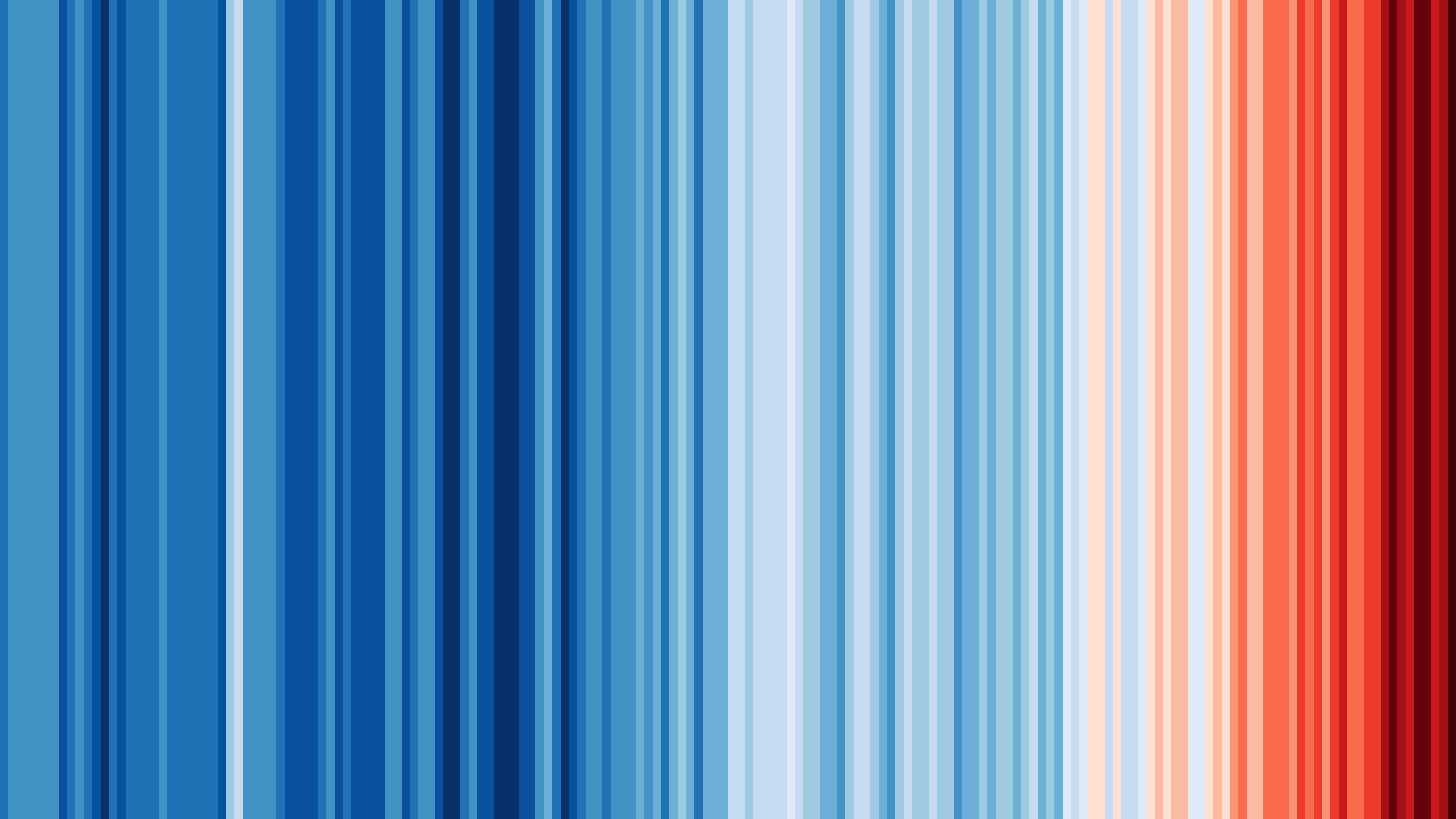The state of our climate 2022
by Kirsty McCabe, FRMetS
Climate change is happening at an unprecedented rate. Released in time for Earth Day 2023, two important reports have detailed the significant climate events of 2022 in Europe and across the globe, and it’s not good news.
Both the annual European State of the Climate and the World Meteorological Organization State of the Global Climate reports for 2022 show that rising global temperatures have resulted in more frequent and more intense extreme weather events, adding to the warning message from the IPCC’s latest synthesis report that we are running out of time.
The past eight years have been the warmest on record, despite a cooling La Niña for 3 straight years. In 2022, the global annual average concentrations of carbon dioxide and methane reached their highest levels ever measured by satellite. Europe experienced its hottest summer on record, compounded by several extreme weather events including intense heatwaves, drought conditions and extensive wildfires, according to data from the Copernicus Climate Change Service.

Key findings for Europe from 2022
- Temperatures are rising at twice the global average rate, faster than any other continent
- Second warmest year ever recorded
- Hottest summer on record, with intense and prolonged heatwaves across much of Europe
- Unprecedented marine heatwaves in the Mediterranean Sea
- Low rainfall and high temperatures led to widespread drought
- Southern Europe experienced the highest number of days with ‘very strong heat stress’ on record
- Carbon emissions from summer wildfires were the highest in 15 years, with some countries seeing the highest emissions in 20 years
- Record loss of ice from Alpine glaciers
- Record number of sunshine hours for Europe

Key findings for the Arctic from 2022
The Arctic region is experiencing drastic changes in its climate with temperatures rising much more rapidly than those over most of the rest of the globe. During 2022, Greenland experienced exceptional heat and rainfall in September, a time of year when snow is more typical, causing record ice sheet melt.
- Sixth warmest year on record
- Warmest summer on record in Svalbard, more than 2.5°C above average
- Record-breaking ice sheet melt in Greenland during exceptional September heatwaves, where temperatures were up to 8°C higher than average.

The bigger picture
Europe’s increasing temperatures are part of an upward trend that has been affecting the world in recent decades. As well as temperatures, the WMO State of the Global Climate uses 6 other key climate indicators – greenhouse gases, sea level rise, ocean heat and acidification, sea ice and glaciers – to describe climate change. The WMO report also highlights the impacts of climate change and extreme weather.
Credit: WMO State of the Global Climate in 2022
Near-surface temperature differences between 2022 and the 1991-2020 average. The map shows the median anomaly calculated from six data sets: Berkely Earth to 2022-09, ERA5 to 2022-09, GISTEMP to 2022-09, HadCRUT5 to 2022-09, JRA-55 to 2022-09, NOAAGlobalTemp to 2022-09
Global findings from 2022
- Global greenhouse gas emissions continue to increase
- The planet was 1.15 ± 0.13°C warmer than the pre-industrial (1850-1900) average, making the last 8 years the warmest on record
- Global mean sea level has risen approximately 3.4 ± 0.3 mm per year over the past 30 years. The ocean heat also reached record levels – a change which is irreversible on centennial to millennial time scales
- Antarctic sea ice fell to its lowest level on record in February 2022
- Europe shattered records for glacial mass lost. For the first time in history, no snow outlasted the summer season, even at the very highest measurement sites, and therefore no accumulation of fresh ice occurred
- Drought, floods and heatwaves affected millions and cost billions
Any positive news?
Europe received its highest amount of surface solar radiation in 40 years, resulting in above average potential solar photovoltaic power generation.
The UN has tasked the WMO and the Office for Disaster Risk Reduction to lead the effort on Early Warning Systems, to ensure that within five years, every person on Earth will know when hazardous weather is on its way.
Renewable energy sources have grown considerably over the past decade and the cost has decreased. Wind and solar reached a record 12% of global electricity in 2022, and power sector emissions may have peaked.
UK focus
A more detailed look at the UK's climate from 2022 is due out in July 2023. In the meantime, last year's State of the UK Climate 2021 is available here.
And if your child is worried about climate change, we've created this video with The Week Junior to help you talk to them.




